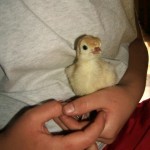Did you know that so far this year Ohio has produced enough young, chilled or frozen turkeys that each Ohioan could eat up to 12 lbs. of turkey and there still be leftovers? Yum, that is a lot of healthy protein. It is incredible to see how diverse our agricultural production is when you look at the numbers from our great state. I hope that the spread on your Thanksgiving dinner table will include at least one local favorite. Get lunch ready before you read on, because this is going to make you hungry.
I’m drooling already thinking about dipping succulent turkey into a serving of fluffy mashed potatoes. When you think potatoes you probably think Idaho, but Ohio produced a fair 2.76 million lbs. of potatoes in 2015. What goes better on the side of a great meal than a flaky croissant roll? Thanks to Ohio wheat growers, soft red winter wheat production is forecasted at 44.8 million bushels. Broken down into terms you can throw around for family trivia, 1 bushel of wheat can be milled into 42 lb. of white four, which is enough to make more than 70 dozen dinner rolls. As for pumpkin pie, you can eat up while eating local. Last year’s pumpkin production was nearly 8.5 million lbs. Not a pumpkin fan? Apple is delicious too and also a thing to be proud of. Already in 2016 apple production has surpassed 42 million pounds. That is about 4 lbs. of apples per Ohioan. Isn’t that amazing?
Now, if you’re trying to keep things healthy this year, hidden calories can be found all over the table. Butter is one of those things that can really enhance flavor. It can also be easy to get carried away with how much we add to our meal. In contrast to criticism by the public for many years, it has actually been proven that butter is a healthy choice for families in moderation. Moderation is the key. One tablespoon of butter is about 100 added calories to your side dish. Real whipped cream is delectable on top of a dessert, but it also can also be one of those overlooked calorie additions. Depending on what type you use one tablespoon could add 25 calories or more. Rethink your drink too if you’re monitoring sugar intake. Water in your cup will help you savor the flavor of what is on your plate. Ohio State Extension has a variety of information that can help you prepare a safe, healthy, and happy Thanksgiving dinner. Feel free to give us a call or visit ohioline.osu.edu and click on “Food” to see the factsheets we have available anytime, day or night.


